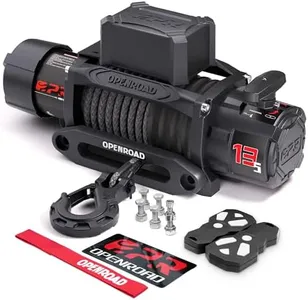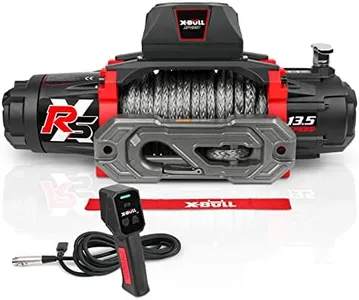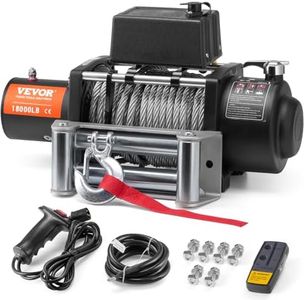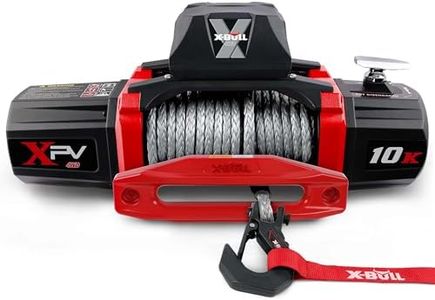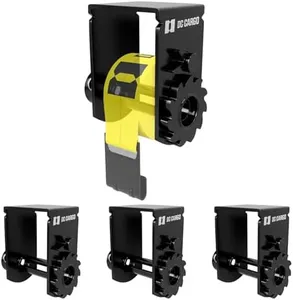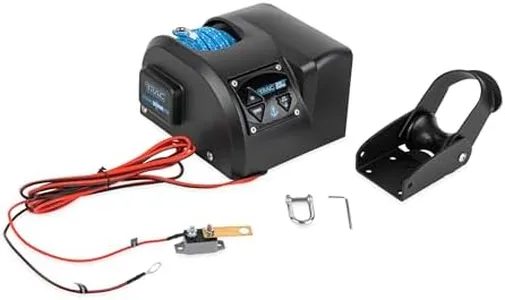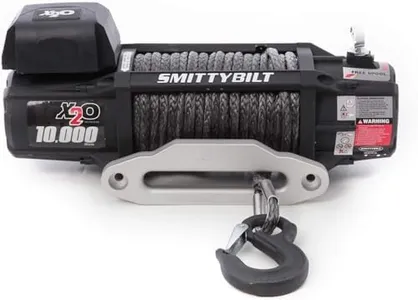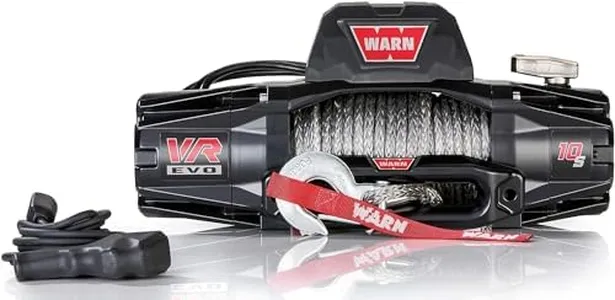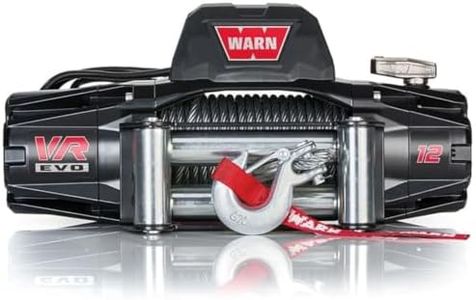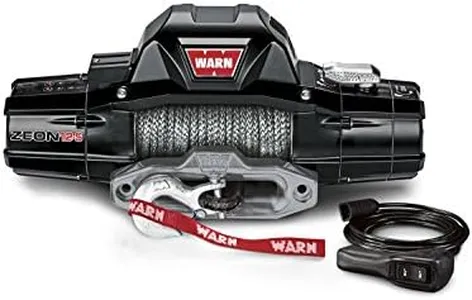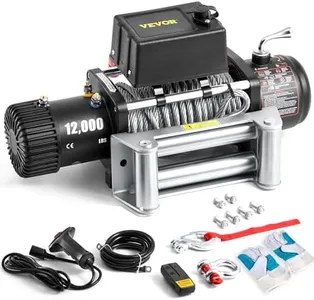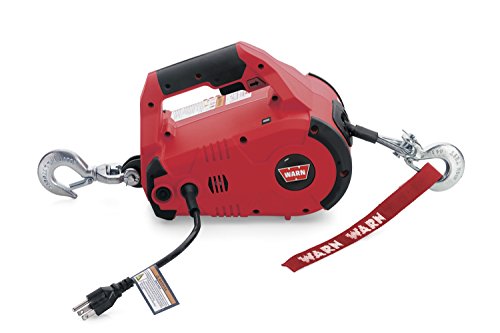10 Best Truck Winches 2025 in the United States
Our technology thoroughly searches through the online shopping world, reviewing hundreds of sites. We then process and analyze this information, updating in real-time to bring you the latest top-rated products. This way, you always get the best and most current options available.

Our Top Picks
Winner
OPENROAD 13500 lb Recovery Winch with Synthetic Rope and 2 Wireless Remotes - IP68 Waterproof 12V Electric Winch for Jeep, SUV, Truck & Trailer - Panther Series 3S
Most important from
70 reviews
The OPENROAD 13500 lb Recovery Winch stands out in the truck winch category due to its strong load capacity and thoughtful design features. With a synthetic rope that measures 3/8" x 85ft and a breaking strength of 13,500 lbs, it's suitable for a range of vehicles including trucks, jeeps, and trailers. This makes it a great option for off-road enthusiasts who require a reliable winch for recovery situations.
One major strength of this winch is its waterproof design, rated at IP68, which ensures that it can withstand various weather conditions without compromising performance. Additionally, the winch is user-friendly with two wireless remotes, allowing for easy control from a distance, and includes a complete installation kit for straightforward setup on your vehicle’s front bumper.
There are a few considerations to keep in mind. While the winch's durability is highlighted by its corrosion-resistant components, the build quality is contingent on proper installation. Users must verify the installation bolt hole dimensions (10" x 4.5") before purchase to ensure compatibility with their vehicle. The winch weighs 50 pounds, which could be a factor for those looking for a lighter option.
Most important from
70 reviews
X-BULL Winch-13500 lb. Load Capacity Electric Winch -12V DC Power for Towing Truck Off Road, 2 in 1 Wireless Remote,13500 XRS Series
Most important from
707 reviews
The X-BULL Winch-13500 lb. Load Capacity Electric Winch is a robust option for truck towing and off-road recovery. It boasts a substantial load capacity of 13,500 pounds, making it suitable for heavy-duty tasks. The motor type is electric, operating on 12V DC power, which is standard for most vehicles. One of its standout features is the high-quality aerospace aluminum fairlead, which ensures optimal performance and durability, supporting loads up to 20,000 pounds. This fairlead also helps in dissipating heat from the gearbox, allowing the winch to run for longer periods without overheating.
The synthetic rope used is lightweight yet extremely strong and resistant to harsh environmental conditions, with a length of approximately 28 meters, providing ample reach for various recovery situations. An IP67 waterproof rating ensures that the winch can function reliably in adverse weather conditions, and the inclusion of both wired and wireless control options (with a range of up to 35 meters) adds versatility and convenience. The winch also features a 3-stage planetary gear system, known for its efficiency and reliability, ensuring strong traction and higher line speed under load.
However, installation requires careful attention to the provided instructions, and a mounting bracket, not included, is necessary. This might pose an inconvenience for some users. At 60.9 pounds, it is relatively heavy, which could be a consideration for users concerned about weight. The product dimensions are 21.9 x 4.9 x 10.4 inches, making it a sizable piece of equipment. The X-BULL Winch is a strong candidate for those looking for a durable, powerful winch with versatile control options, but potential buyers should be prepared for the installation requirements.
Most important from
707 reviews
RUGCEL WINCH 13500lb Waterproof Electric Truck Winch 12V Synthetic Black Rope Jeep Winch with Hawse Fairlead,Wired Handle and 2 Wireless Remote,for Trailer and Wrangler in Car Lift
Most important from
1489 reviews
The RUGCEL WINCH 13500lb Electric Truck Winch offers substantial pulling power, making it a strong choice for rescuing vehicles from difficult terrains like mud and inclines. Its 13500lb load capacity ensures it can handle heavy-duty tasks, and the 12V 7.2hp motor provides robust performance with a 3-stage planetary gear train, contributing to fast line speeds and effective pulling power.
The synthetic rope, which is 85ft long, is favored for its durability and hardness over traditional steel cables, reducing the risk of snapping and enhancing safety during operations. The winch is also equipped with a waterproof IP67 rating, making it durable and capable of functioning in various weather conditions, including mud and snow. The black powder-coated finish and stainless steel components help prevent corrosion, adding to its longevity.
Control options are versatile, featuring both a wired handle and two wireless remotes, allowing for safer operation from a distance. However, at a weight of 61.9 pounds, the winch is relatively heavy, which might be a consideration for those looking for a more portable option. The RUGCEL WINCH 13500lb is a reliable and powerful winch with excellent features suitable for those needing a robust solution for heavy-duty vehicle recovery.
Most important from
1489 reviews
Buying Guide for the Best Truck Winches
Choosing the right truck winch is crucial for ensuring you can handle any situation that requires pulling or lifting heavy loads. A winch can be a lifesaver when you're off-roading, stuck in mud, or need to move heavy objects. To make the best choice, you need to understand the key specifications and how they relate to your specific needs. Here are the main factors to consider when selecting a truck winch.FAQ
Most Popular Categories Right Now


